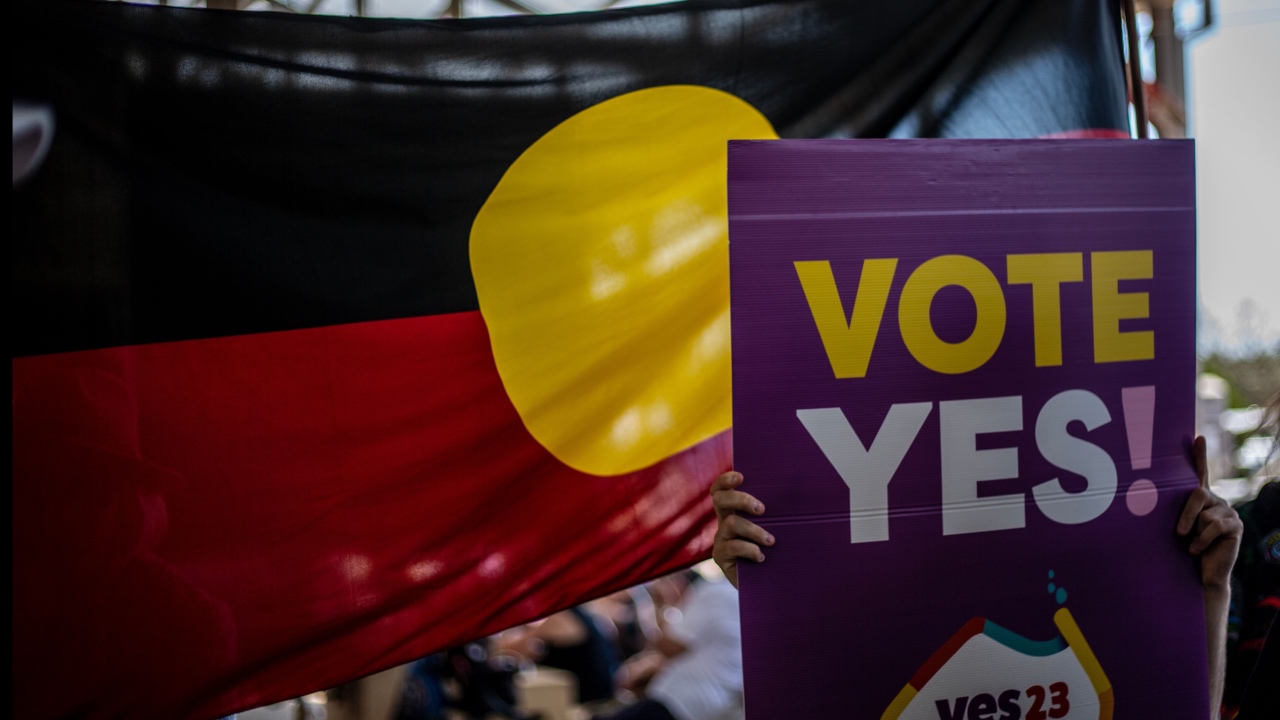No, the Voice proposal will not be ‘legally risky’. This misunderstands how constitutions work

William Partlett, The University of Melbourne
The “no” campaign’s primary argument in the current referendum debate focuses on the dangerous consequences of a constitutionally enshrined Voice to Parliament.
This argument is relevant to the parliamentary debate about how a constitutional Voice to Parliament will be set up through legislation. But it has no bearing on the referendum debate.
This debate involves a different, moral question: do you support the idea of recognising First Australians in the Constitution by giving them a voice on matters that affect them?
What exactly is the ‘no’ campaign arguing?
Although the “no” campaign opposes a constitutionally enshrined Voice, some of its key leaders are not against the general idea of a Voice institution itself. Instead, many “no” campaigners, including Opposition Leader Peter Dutton, support legislated Voice institutions at the regional level.
The “no” side also does not oppose constitutional recognition for First Australians. Dutton has recently promised that if the Voice referendum fails, the Coalition would hold another referendum on First Nations constitutional recognition if it is returned to power.
The “no” side’s main argument, therefore, is a very specific one. It focuses on what it claims are the dangerous consequences of recognising First Australians by placing a Voice institution in the Australian Constitution.
In its official campaign pamphlet, the “no” side claims that doing this will:
-
be “legally risky” and lead to litigation
-
“risk delay and dysfunction” in government
-
be a “costly and bureaucratic” institution with “no issue beyond its scope”.
Finally, the “no” side claims the Albanese government has not put forth any details on how this Voice body would function, and it would be a “permanent” change that will open the door for “activists”.
The nature of constitutions
These concerns, however, fundamentally misunderstand how constitutions work.
Constitutions are not detailed documents that anticipate every possible circumstance. On the contrary, they are by nature short and incomplete documents. They inherently contain large gaps.
In Australia, the evolution of constitutional institutions has been primarily shaped by parliament through legislation.
Take the constitutional provision creating the High Court as an example. The Constitution contains very little detail on how the High Court operates. It does not even specify how many justices will be on the court. It merely says:
The High Court shall consist of a Chief Justice, and so many other Justices, not less than two, as the Parliament prescribes.
Indeed, it was left to parliament to establish the jurisdiction and powers of the High Court in the Judiciary Act in 1903. And since then, parliament has passed numerous amendments that continue to shape the operation of the court, ensuring it continues to develop in line with the needs of contemporary Australian society.
For instance, the court has increased in size from three to seven justices in order to handle its increasing case load, which many in the early 20th century thought would be very light.
The Voice to Parliament proposal
The proposed Voice body will operate in the same way. The proposal is typical of other clauses already in the Constitution – it contains little detail other than there “shall be a body” called the “Aboriginal and Torres Straits Islanders Voice” that will make “representations” to parliament.
Details on how the body is selected and how it will operate are explicitly left to parliament.
The final section of the proposed Voice provision states:
the parliament shall, subject to this Constitution, have power to make laws with respect to matters relating to the Aboriginal and Torres Strait Islander Voice, including its composition, functions, powers and procedures.
If the October referendum vote is successful, it will be up to the current parliament to pass the foundational legislation setting up the Voice body. But this law will always be subject to change by subsequent parliaments. If there are problems with the way it functions, future parliaments can fix those issues through amending legislation (just as the functioning of the High Court has changed over time).
The proposed constitutional Voice will, therefore, operate in much the same way as a legislated Voice would. In the end, both would be controlled by parliament.
The various concerns of the “no” side are best suited to this legislative debate. For instance, it will be important to ensure the legislation creating the Voice does not lead to dysfunctional government or become a costly or ineffective bureaucracy.
But the “no” side’s concerns have no bearing on the constitutional question we all must answer in the referendum.
A moral question
Instead, we face a clearer, moral question on October 14: do we support the idea of recognising First Australians in the Constitution by giving them a voice in matters that affect them?
In answering this question, it is worth considering the findings of the Royal Commission into Aboriginal Deaths in Custody from more than 30 years ago.
The commission linked the shocking number of First Australians dying in state custody to the historical fact that Aboriginal people have faced “deliberate and systematic disempowerment” for more than a century. It said:
Decisions were made about them and for them and imposed upon them.
Only First Nations empowerment, the report concluded, would overcome this disadvantage.
This empowerment process began with a series of First Nations regional dialogues that ultimately called for a constitutionally enshrined Voice to Parliament in 2017. This empowerment is not real, however, until we heed this call.
William Partlett, Associate Professor, The University of Melbourne
Image credits: Getty Images
This article is republished from The Conversation under a Creative Commons license. Read the original article.
